Welcome to Jain Irrigation Systems Ltd.
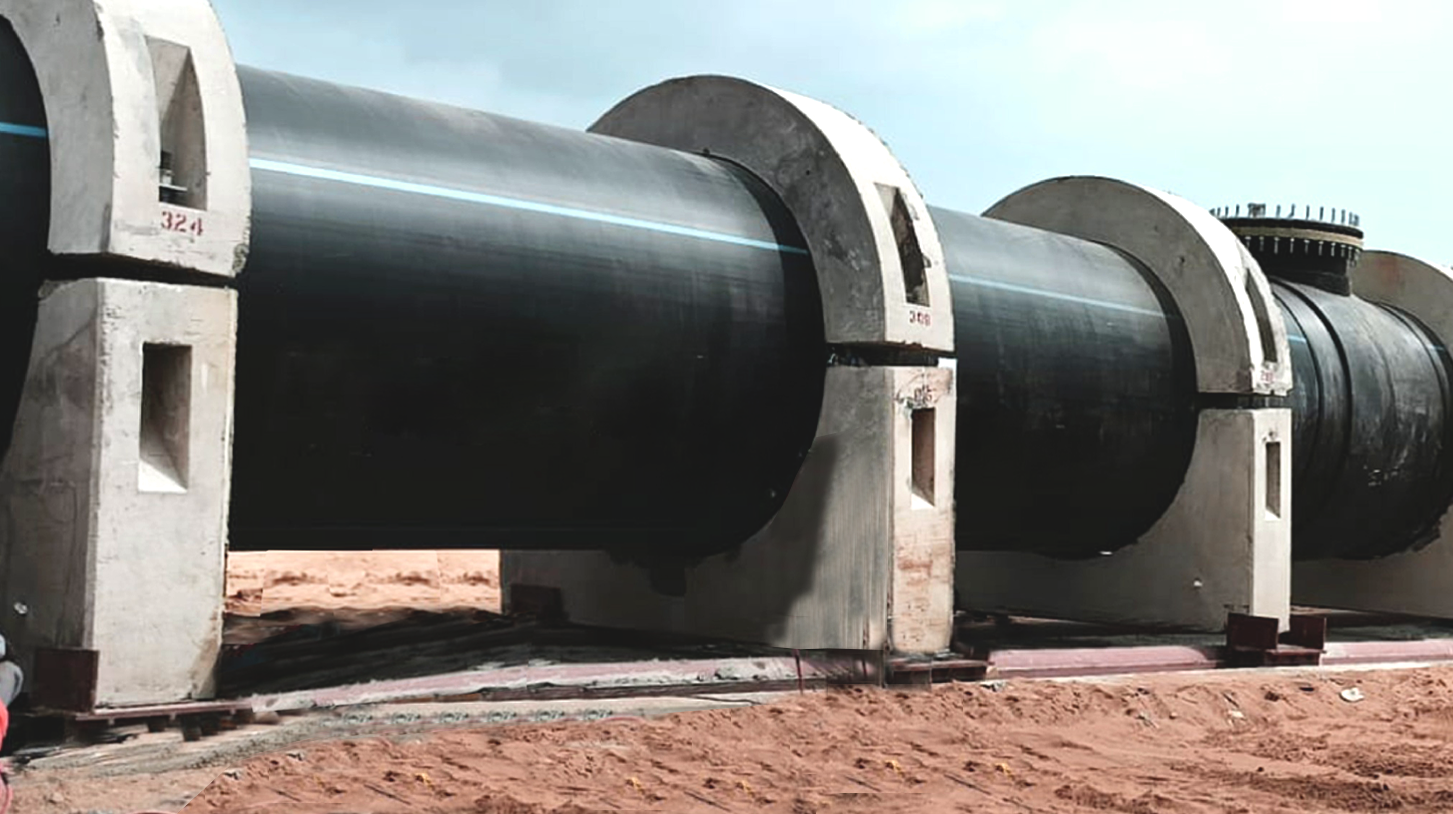
Making Waves Beneath the Surface: The Rise of HDPE Pipes in Subsea Applications
Jain PE pipes and Fittings are the result of Leadership and Technical Expertise of Jain Irrigation Systems Limited and have earned them a niche in the Piping Industry as a Total Solution Providers for the Piping Systems. Jain PE pipes, manufactured strictly in accordance with National and International Standards with UV stabilized PE80 and PE100 HDPE raw material. These pipes have been installed worldwide and thousands of kilometers of pipelines are in service in numerous Irrigation, Water Supply, Sewerage, Dredging, Mining, Fire Fighting, Desalination Plant piping, Seawater intake and brine/effluent/treated sewerage outfall piping and gas conveyance Systems.
JISL offers a complete range of Jain PE piping systems with fittings and accessories along with the design, technical and installation support combined with efficient after sales service. JISL offers Jain PE pipes and fittings ranging from 4mm OD to 2500mm OD with pressure rating from 2.5 bar to 25 bar.
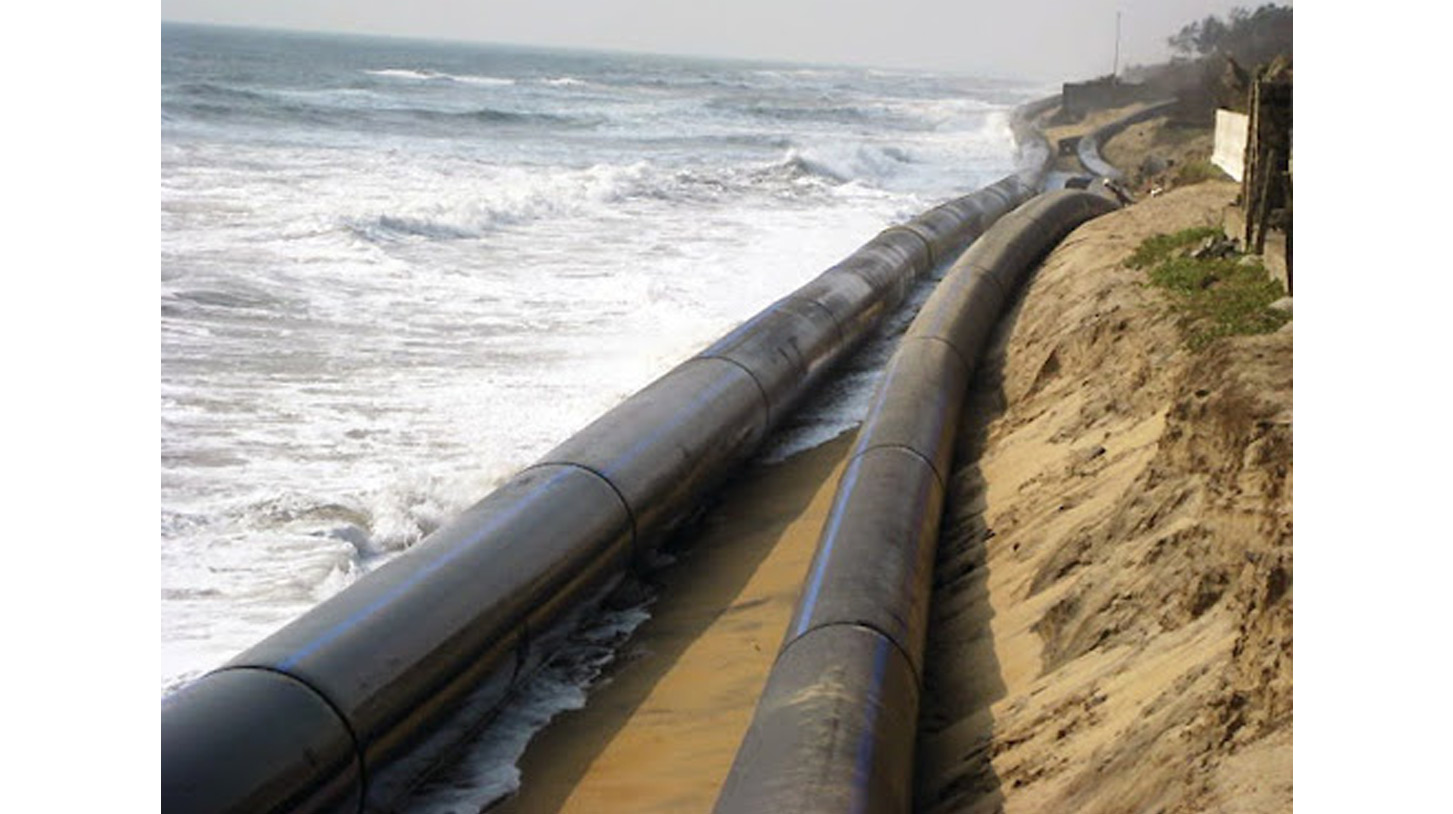
When it comes to piping solutions for seawater intake and outfall systems, there’s one hero that consistently outperforms the rest — Jain HDPE (High-Density Polyethylene) Pipes. These strong, flexible, and resilient pipelines are making deep waves in the marine and subsea world, revolutionizing how industries approach underwater and coastal installations.
Let’s dive deeper into why HDPE pipes are becoming the go-to choice for subsea surface applications — and why their journey from land to sea is nothing short of fascinating.
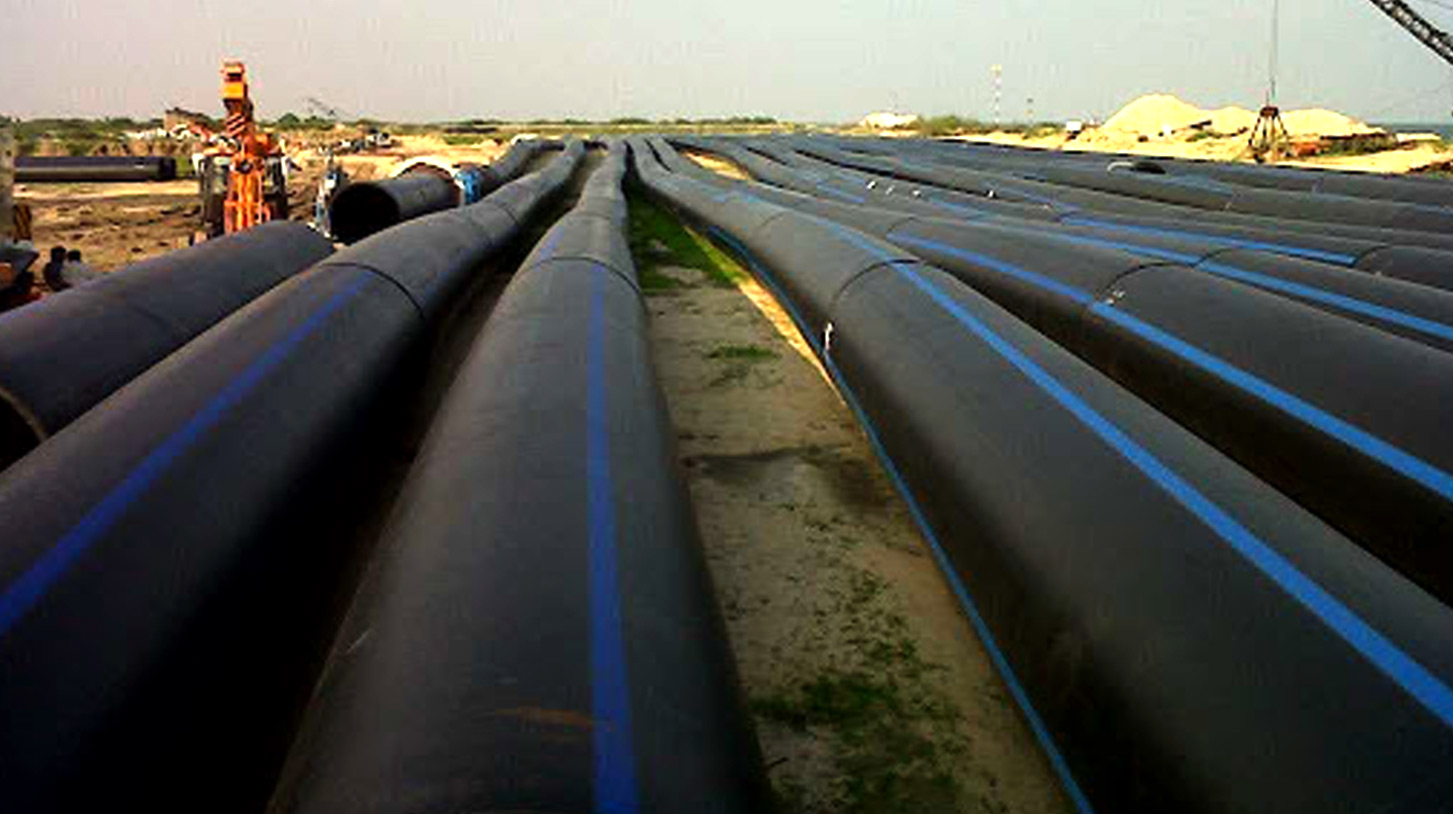
What Makes HDPE a Marine Marvel?
First introduced in the 1955s, HDPE has steadily evolved to become one of the most trusted materials in modern piping. With a design life of over 100 years, these pipes are built not just for durability but for long-term performance under the harshest conditions.
Here’s what makes HDPE a standout:
- Built for Pressure: HDPE pipes exhibit exceptional hydraulic characteristics and can easily withstand high internal pressures and external stress from wave activity and seismic shifts.
- Incredible Flexibility: These pipes can bend and adapt to underwater terrain, making installation smoother, especially with methods like "float and sink."
- Corrosion and Chemical Resistance: Saltwater? Acids? Alkaline soils? HDPE handles them all like a pro. Its chemical resistance is unmatched, covering the entire pH scale from 1 to 14.
- Leak-Proof Joints: Thanks to advanced butt fusion techniques, HDPE joints are not only leak-proof but often stronger than the pipe itself.
- Lightweight, Yet Strong: Don’t let their weight fool you — HDPE pipes are light enough for easy transport and installation but strong enough to handle heavy-duty coastal and underwater operations.
- UV Resistant & Eco-Friendly: With full resistance to UV damage and being 100% recyclable, HDPE is as sustainable as it is sturdy.
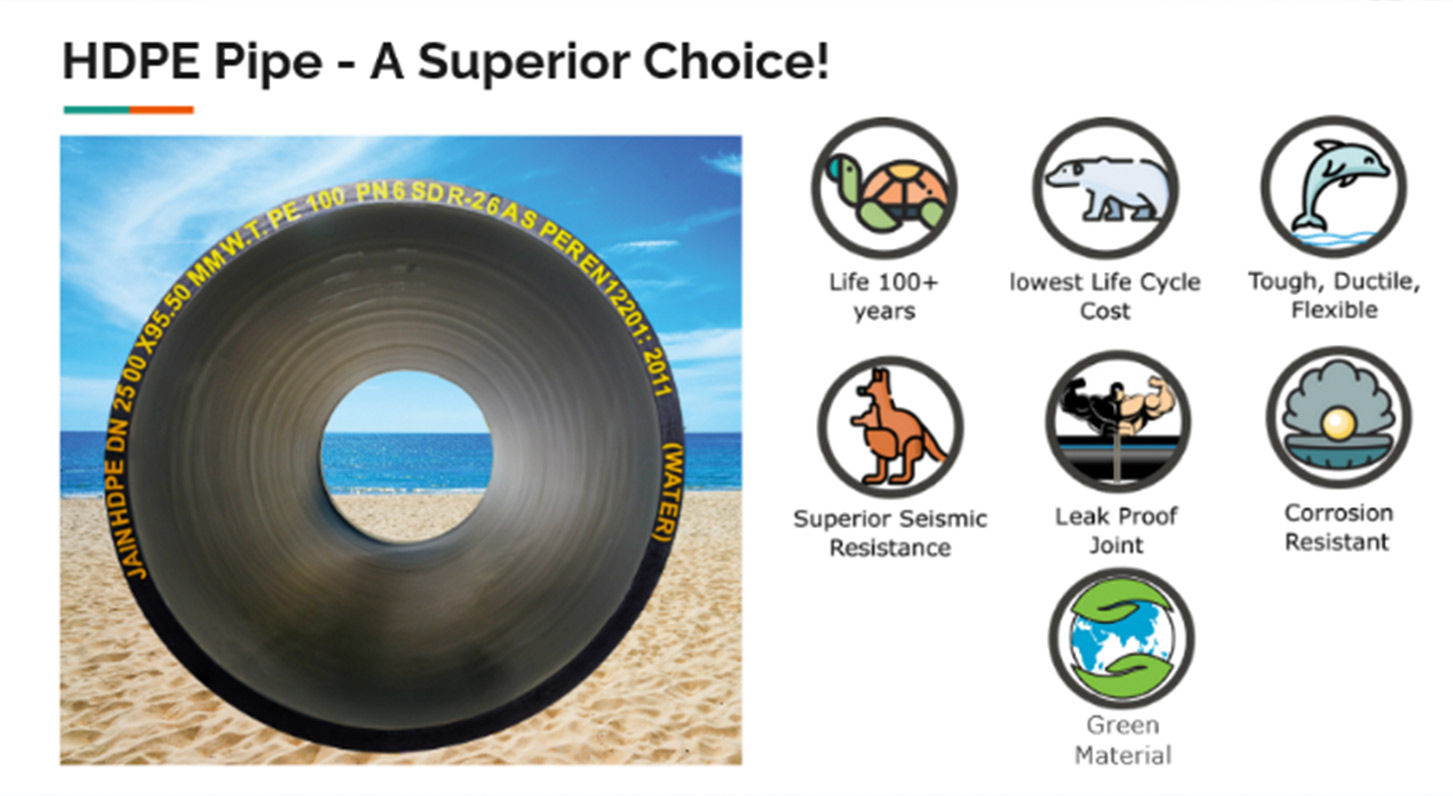
A Deep Dive into Jain HDPE’s Advantages
HDPE doesn’t just survive underwater — it thrives. Its monolithic leak-proof joints, fatigue resistance, and low maintenance needs make it a clear winner for any coastal or marine application.
- Negligible Maintenance Costs: Once installed, HDPE asks for little and delivers a lot.
- Energy Efficiency: Its smooth inner surface reduces friction, minimizing energy losses during fluid transportation.
- Low Surge Pressure Impact: The lowest among all pipe materials — HDPE handles water hammer and surge pressures with ease.
- Suited for All Terrains: Earthquake zones, unstable soils, salty environments — you name it, HDPE can take it.
- Low Maintenance: Minimal or no repair and very long service life that makes HDPE cost effective and economical.
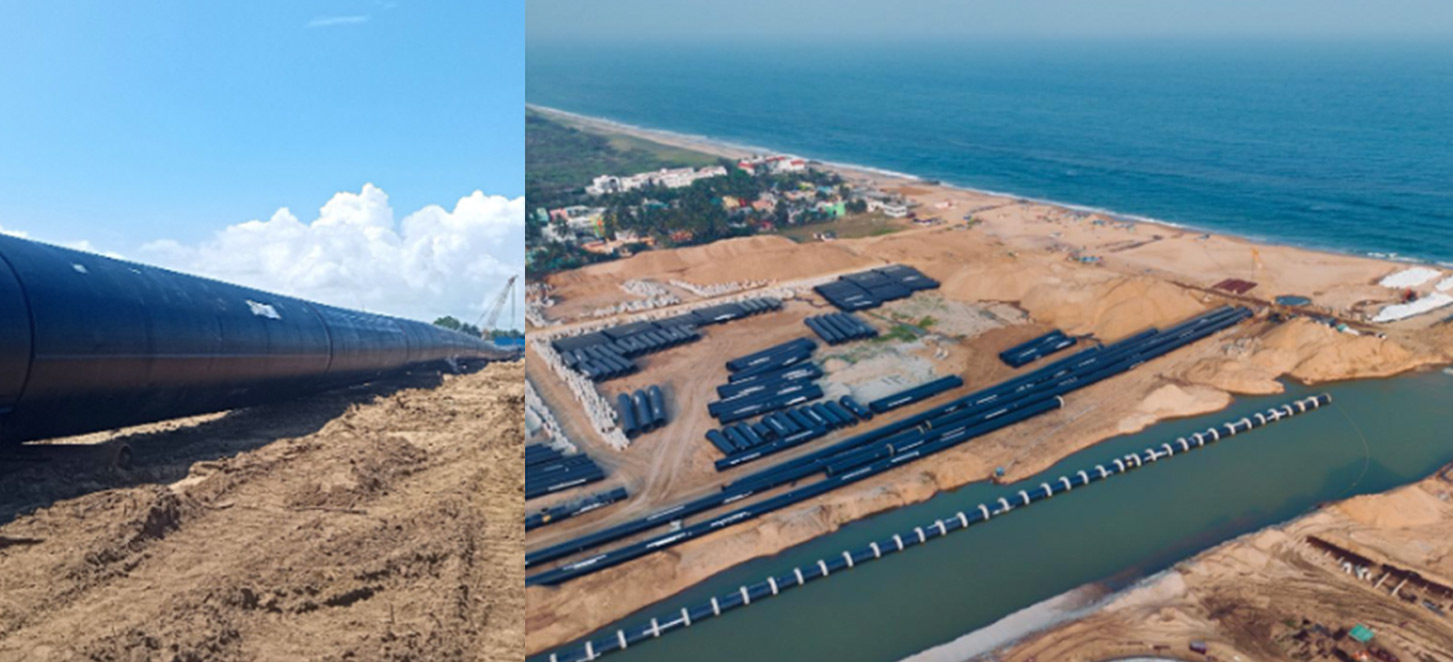
The SWOT Breakdown: Jain HDPE for Marine Use
- Strengths
- Saltwater corrosion resistance
- Flexibility for seabed contours and seismic activity
- Long lifespan, abrasion resistance
- Leak-free fusion joints
- Lower installation & maintenance costs
- Excellent performance in desalination environments
- Buoyancy in water requires anchoring or anti-buoyancy ballast weights
- But guess what? That’s an advantage when using the float and sink installation method.
- Rapidly growing desalination sector
- Technological advancements in marine pipe installation
- Increased demand for sustainable infrastructure
- Expansion into deep-sea applications
- Alternative materials like GRP and steel alloys pose competition
- However, these materials have repeatedly failed in Indian marine conditions.
- Potential damage from marine traffic and anchors
- A threat common to all pipe materials, especially in Arabian Sea conditions due to intense tides.
The SWOT Breakdown: Jain HDPE for Marine Use
- Minjur Desalination Plant, Chennai Metro Limited (1600 mm Pipe)
- Coastal Energy, Tuticorin (1600 mm)
- BEFESA, Spain (560 mm, 6 Parallel Lines)
- EDT Marine, Israel (1600 mm)
- Tuticorin, TamilNadu (2000 mm)
- Perur, Chennai (2500 mm)
From ports in India to global marine projects, Jain HDPE has consistently delivered high performance and reliability. The best part? Its monolithic joints and flexible structure make it possible to assemble pipes outside narrow trenches, something impossible to achieve with GRP pipes without additional bends or adjustments.
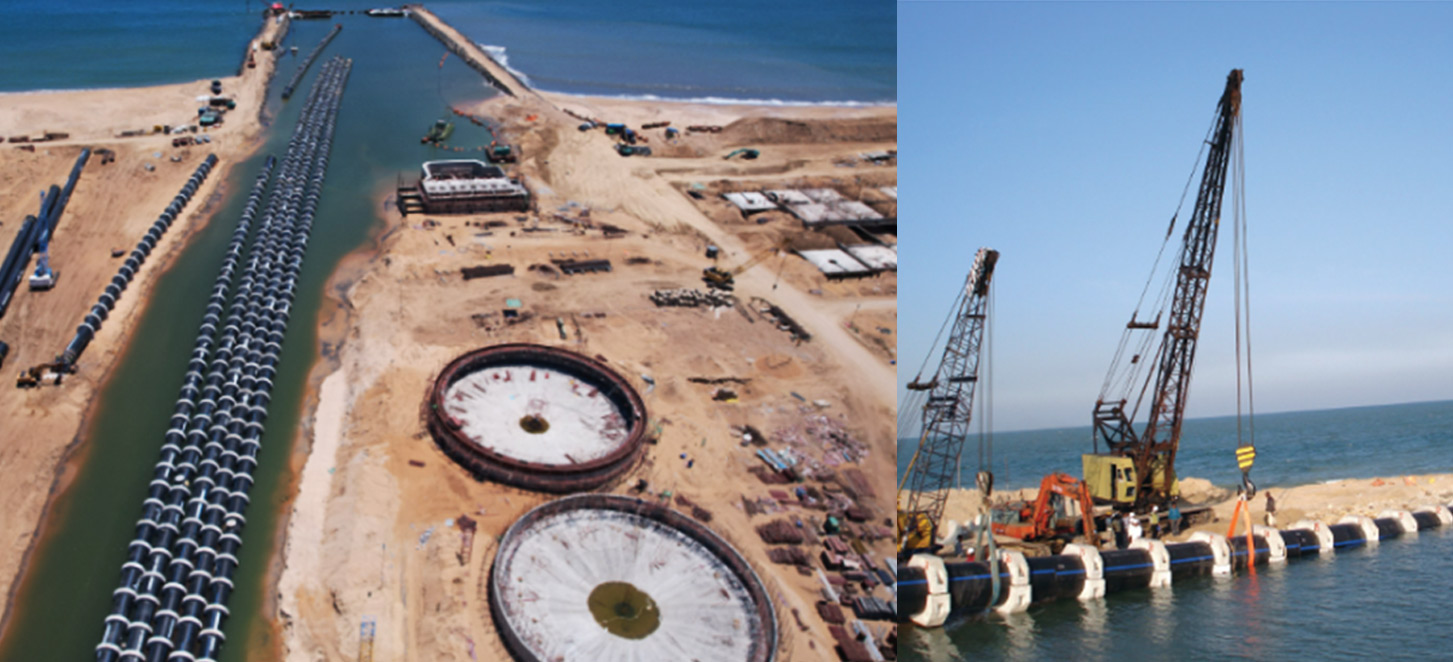
Jain HDPE Pipes: The Strong Silent Partner Beneath the Surface
For Infrastructure That’s Built to Last
When it comes to underground infrastructure, out of sight should never mean out of mind. That’s where Jain HDPE Pipes step in—silently delivering performance, reliability, and zero drama.
With a design life of over 100 years, Jain HDPE pipes are more than just a long-term investment; they’re a legacy. Whether it’s municipal water supply, sewer systems, or industrial drainage, these pipes are flexible, fatigue-resistant, and built to brave everything from seismic tremors to extreme temperatures.
And the cherry on top? Their leak-proof monolithic joints that perform better than the pipe itself! That’s a pipe dream come true.
- Highest Hazen-Williams C Value = 150 (hello energy savings!)
- Earthquake? No problem. Acidic soil? Bring it on.
- Practically zero maintenance
When you install Jain HDPE Pipes, you’re not just laying pipelines—you’re laying peace of mind.
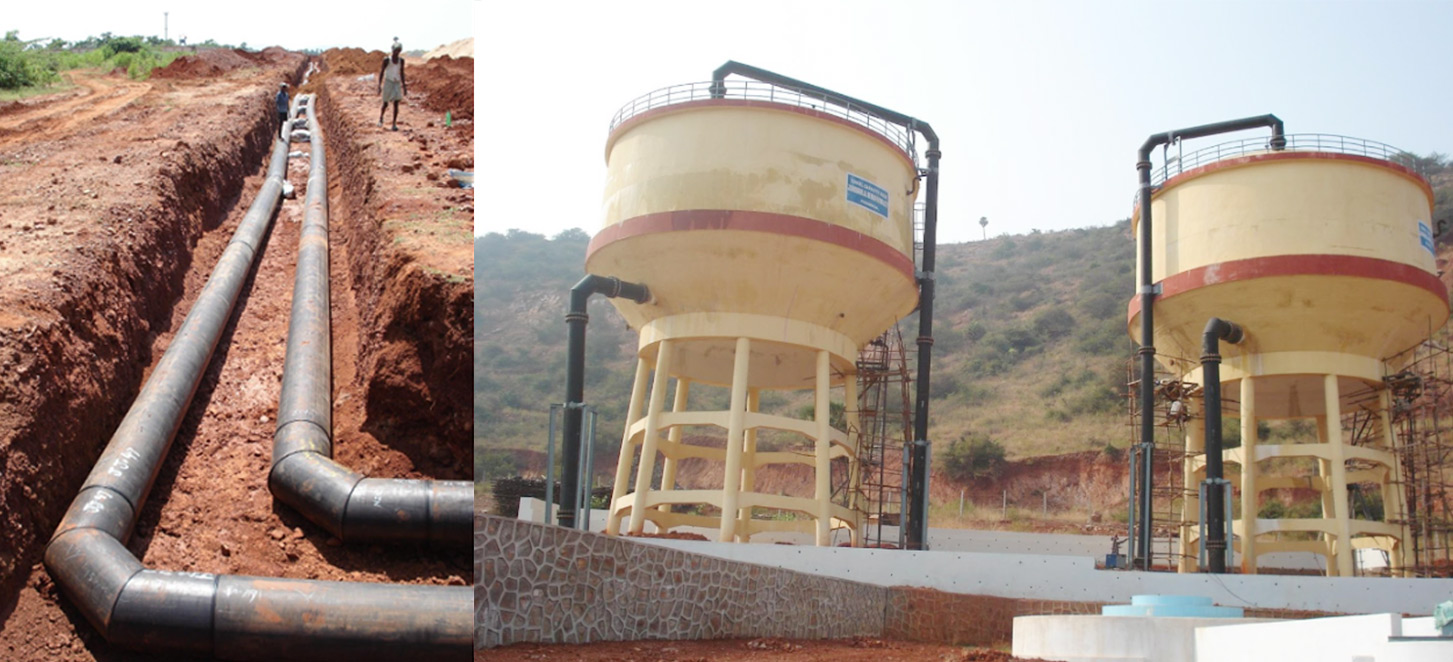
Water You Waiting For? Jain HDPE Pipes Make Irrigation Smarter
Agriculture thrives when the right systems are in place—and irrigation is at the heart of it. Jain HDPE Pipes are tailor-made for precision irrigation, providing farmers with a leak-proof, durable, and easy-to-handle solution.
These pipes are lightweight, chemically inert, and perform like champions even when facing variable pressure and weather conditions. From mainlines to sub-mains and even lateral pipelines, Jain HDPE ensures smooth water flow, minimal friction loss, and low energy input.
- Withstands high pressures and harsh environments
- Adaptable to chemicals, fertilizers, and UV rays
- Easily adapted for modern drip and sprinkler irrigation systems
For a greener tomorrow and better yields today—Jain HDPE is the pipe of choice in the field.
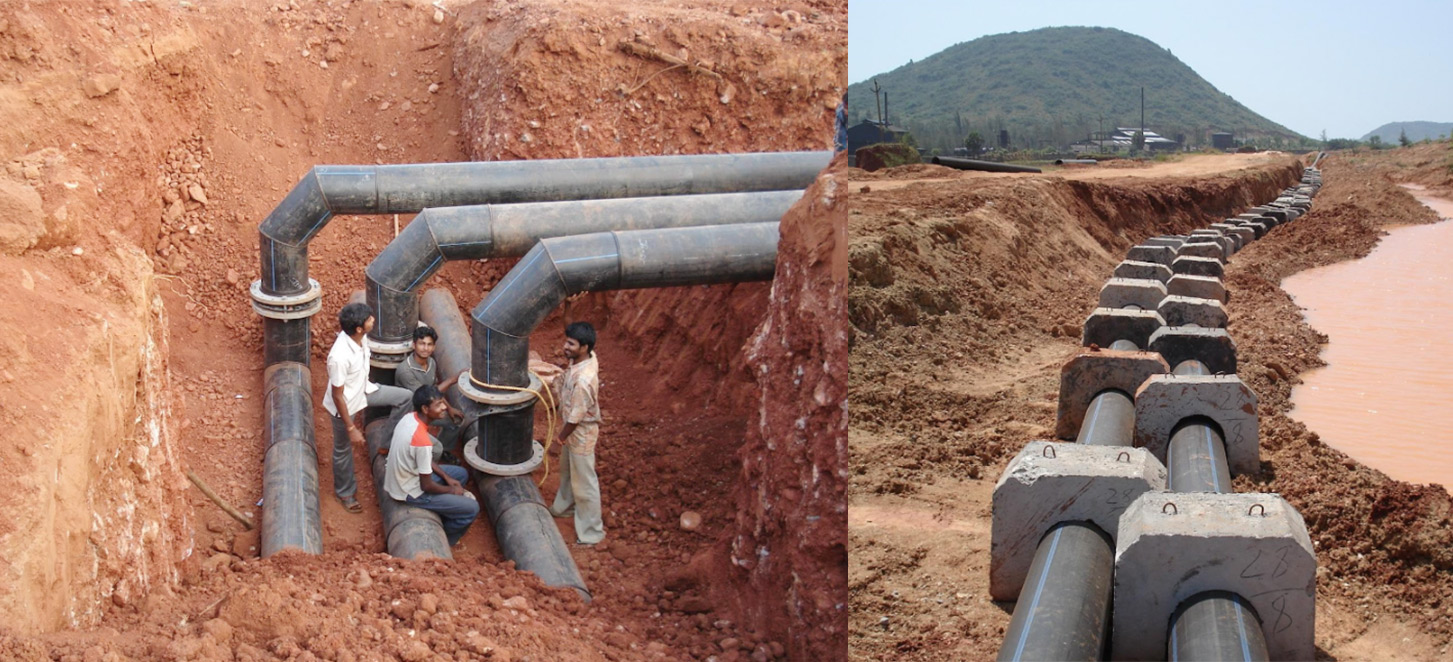
Sustainability with Jain HDPE
In a world where eco-conscious infrastructure is the need of the hour, Jain HDPE Pipes tick all the green boxes. These pipes are designed with sustainability in mind.
Their long life, zero-leak technology, and energy-efficient operation reduce the environmental footprint over decades. Unlike metal pipes, they don’t corrode or leach toxins, making them ideal for potable water, food-grade fluids, and eco-sensitive areas.
- 100 Years Life
- Completely recyclable (Green Tag Certified)
- Helps conserve water with leak-free performance
- Low energy consumption across their lifespan
From cities to villages, rivers to farmland, onshore / offshore pipelines to oceans—Jain HDPE is helping the world move water responsibly.
Why should Jain HDPE Pipes be your Choice?
At Jain Irrigation Systems Ltd., we’ve perfected the science of delivering top-quality HDPE pipes tailored for the toughest subsea challenges. Whether it’s an intake line for a desalination plant or an outfall pipeline for industrial discharge, our pipes are engineered for endurance, sustainability, and superior performance.
We’re not just offering a product — we’re offering peace of mind, proven performance, and a pipeline to the future.
Let’s Build What the Sea Can’t Break.
Get in touch with us to learn how Jain HDPE Pipes can become the backbone of your next infrastructure project.


